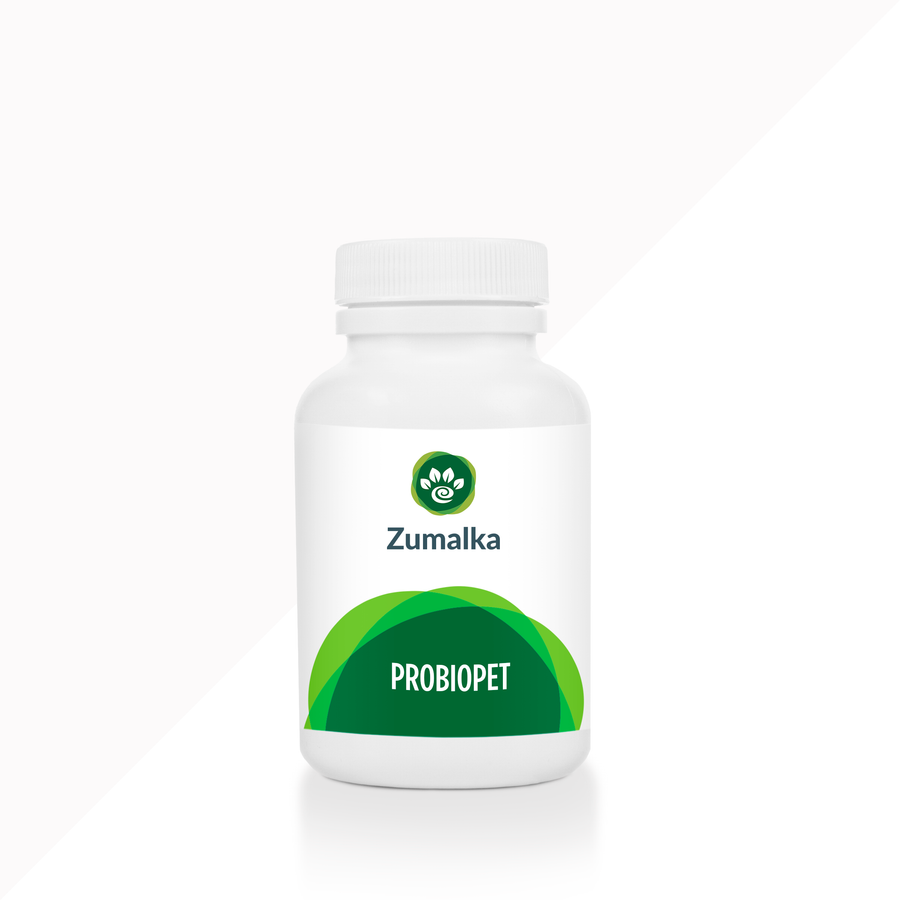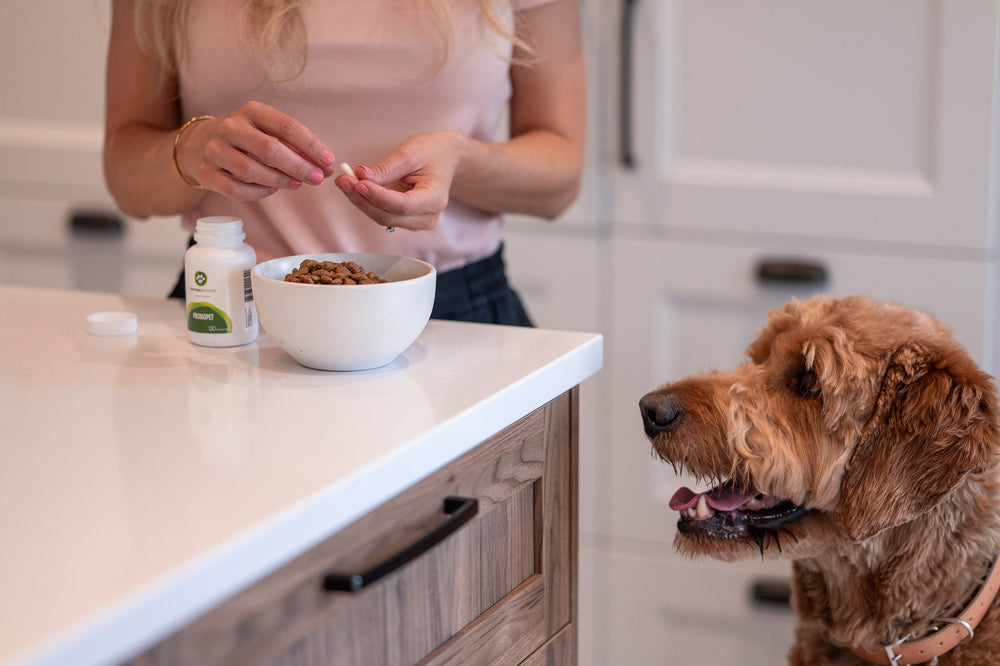Vet-Verified: 10 Dog Feeding Mistakes That Could Harm Your Pet’s Health
List of Contents
Feeding your dog may seem straightforward, but common mistakes can silently undermine their health. Understanding these dog feeding errors is key to ensuring proper nutrition and long-term well-being.
These common feeding mistakes can contribute to weight gain, nutritional deficiencies, diabetes, joint issues, and other long-term health problems. Addressing them early is essential for your dog’s overall health and quality of life.
By avoiding common dog feeding mistakes, you can provide balanced nutrition that supports your pet’s long-term health and vitality. This guide reveals the top 10 feeding errors and guides how to prevent them.
Top 10 Dog Feeding Mistakes and How to Avoid Them
Did you know that many pet owners unknowingly make feeding mistakes that can affect their dog’s health? In this section, you'll learn about the top errors to avoid for optimal nutrition and well-being.
#1. Overfeeding your dog can lead to hidden health risks

Overfeeding is one of the most common dog feeding mistakes, often caused by misjudging portion sizes or giving in to begging behavior. Excess calories can lead to obesity, which raises the risk of diabetes, joint problems, certain cancers, and a shorter lifespan.
To avoid overfeeding, follow the portion guidelines on your dog’s food label or get personalized advice from your veterinarian or pet nutritionist. Proper portions should reflect your dog’s breed, age, activity level, and overall health.
Accurately measuring your dog’s food with a standard cup helps prevent overfeeding. Monitor their weight regularly and adjust portions to maintain a healthy body condition.
Pay attention to how quickly your dog finishes their meals. If food remains after 15 minutes, you may be offering too much. Consistently leaving food behind can signal overfeeding or other health concerns.
#2. Ignoring your dog’s age, activity level, and unique needs
A dog’s nutritional needs change with age, activity level, and overall health. Puppies require more calories for growth, while senior dogs need fewer calories and more targeted nutrients. Feeding all dogs the same way can lead to imbalances, weight issues, or unmet dietary needs.
Adjust your dog’s food type and portion size based on their life stage and actual activity level. This personalized approach helps maintain a healthy weight and ensures balanced nutrition at every age.
As your dog’s needs change with age and activity, consult a veterinarian or pet nutritionist for tailored feeding recommendations. Puppy food plays a vital role in early development and should only be phased out under professional guidance.
#3. Picking the wrong food and ignoring the label
Dog food isn’t one-size-fits-all. Each dog has unique dietary needs. Some commercial formulas contain low-quality fillers or artificial additives that lack nutritional value. Manufacturers may also change ingredients without notice, which can cause problems for dogs with food sensitivities.
Terms like "natural" and "holistic" may sound appealing, but lack legal definitions and can be misleading. Many owners also overlook whether a dog food is AAFCO-certified as “complete and balanced.” Without this certification, your dog may miss essential nutrients needed for long-term health.
Choose dog food that suits your dog’s breed, age, and health status to meet their specific nutritional needs. Specialized formulas, such as grain-free, hypoallergenic, or high-protein, can help address unique dietary requirements. Providing the right food supports your dog’s overall health, energy, and longevity.
Read dog food labels carefully to avoid low-value fillers, artificial colors, and preservatives. Prioritize high-quality protein sources like chicken, beef, or fish, along with whole, recognizable ingredients. Always check for the AAFCO nutritional adequacy statement to ensure the food meets your dog’s essential dietary requirements.
#4. Constant access doesn’t mean healthy eating

Allowing dogs constant access to food can lead to overeating and poor portion control. Many dogs eat out of boredom or anxiety rather than hunger. This feeding habit can contribute to weight gain and increase the risk of long-term health issues.
Establishing scheduled mealtimes, usually twice a day, helps create a consistent routine and prevents overeating. Measuring each portion ensures your dog gets the right amount of food for their size and activity level. This approach supports healthy digestion, weight control, and overall well-being.
#5. When snacks replace nutrition
While treats are useful for training and rewards, giving too many can add excessive calories and disrupt your dog’s balanced diet. Many pet owners overlook the calorie content of treats, unintentionally contributing to weight gain. Relying on food alone for enrichment may also encourage begging or compulsive eating behaviors.
To support healthy weight management, limit treats to no more than 10% of your dog’s daily calories. Choose nutritious, low-calorie options like carrots, green beans, blueberries, seedless apple slices, or small amounts of cooked or canned pumpkin. Offering treats in moderation supports a balanced diet and reinforces good behavior without compromising your dog’s health.
Breaking larger treats into smaller pieces helps control calories without losing training impact. To keep your dog engaged without overfeeding, add enrichment like puzzle toys, interactive games, and daily exercise. These activities support both mental stimulation and overall health.
#6. Why human food and table scraps can be harmful to dogs
Many common human foods, including chocolate, grapes, onions, garlic, raisins, macadamia nuts, and xylitol, are highly toxic to dogs even in small amounts. Table scraps also tend to be high in fat, sugar, and sodium, which can lead to digestive problems like pancreatitis.
In addition, feeding from the table reinforces begging behavior and unhealthy eating habits. Choose only dog-safe foods and treats designed for pets to protect their health. If offering human food, stick to safe options like plain chicken, carrots, or seedless apple slices in moderation. Always introduce new foods slowly and in small portions to prevent digestive upset.
#7. Overlooking water’s vital role in health

Many pet owners focus on food but underestimate the critical role of water in their dog’s health. Dehydration can cause serious problems, including kidney disease, urinary tract infections, and persistent fatigue.
Always provide your dog with fresh, clean water throughout the day to keep them properly hydrated. Make sure their water bowl is full, accessible, and refreshed regularly to support overall health.
Dogs on dry kibble often need extra hydration, so adding water to their meals can help increase intake. You can also incorporate wet food to boost moisture and support better overall hydration.
#8. Switching too quickly can harm digestion
Dogs have sensitive digestive systems, and sudden diet changes can easily trigger stomach upset. Abrupt food switches often lead to diarrhea, vomiting, or other gastrointestinal issues.
When switching your dog’s food, make the change gradually over 7–10 days to avoid stomach upset. Begin with a small amount of the new food mixed into their current diet, then slowly increase the ratio each day. A gradual transition helps your dog’s digestive system adapt and minimizes the risk of diarrhea, vomiting, or discomfort.
Dogs with especially sensitive stomachs may require a slower transition to new food. Extending the process to 10 days or even 2 weeks can help prevent digestive upset. If digestive upset occurs, return to your pet’s regular diet. If symptoms persist, consult your veterinarian.
#9. How ignoring guidelines risks freshness and safety
Improper dog food storage can cause kibble or wet food to spoil, reducing its nutritional value and increasing the risk of harmful bacterial growth and mold, which can lead to gastrointestinal issues. Poor storage practices may also attract pests such as insects or rodents, putting your dog’s food safety at risk.
Dry kibble should be kept in a cool, dry spot and stored in an airtight container to protect freshness and prevent contamination. Leftover wet food must be refrigerated right away and used within the packaging’s recommended timeframe. These practices preserve nutritional quality and ensure your dog’s meals remain safe.
#10. Relying on guesswork instead of veterinary or a pet nutritionist's feeding advice
Many dog owners unintentionally make nutrition mistakes, such as mixing complete diets and disrupting the balance of essential nutrients. These missteps can lead to long-term health problems that proper guidance could easily prevent. Trying to address complex dietary or behavioral issues through food alone, without veterinary support, may put your dog’s well-being at risk.
Work with your veterinarian or a certified pet nutritionist to design a feeding plan tailored to your dog’s unique needs. These professionals are trained in canine nutrition and can recommend the right diet for your dog’s life stage, activity level, and medical conditions. Expert guidance ensures your dog receives balanced nutrition and reduces the risk of preventable health issues.
Consult a qualified dog nutritionist for specialized guidance, particularly if your dog has unique health needs or is a working breed. Watch for signs of food intolerances, such as itchy ears or paw chewing, and seek veterinary advice on possible dietary adjustments like grain-free or novel protein diets.
Dog Nutrition and Immunity: Why They Work Together
Meeting your dog’s nutritional needs is only part of supporting their long-term health. Strengthening their immune system with a premium, natural option can provide added protection and overall wellness.
Zumalka’s IMMUNOPET is a natural supplement formulated to strengthen your dog’s immune system by supporting healthy blood, lymph nodes, and white blood cell production. IMMUNOPET helps the body defend against bacterial and viral infections and can be a valuable aid for dogs facing serious health challenges, including cancer.
Additionally, PROBIOPET can be used alternately with IMMUNOPET to support both digestive and immune health. Together, they offer a broader spectrum of benefits for overall wellness.
Key Takeaways
Feeding your dog may seem straightforward, but avoiding common mistakes is key to supporting their long-term health and happiness. With mindful feeding habits, you can provide balanced nutrition that promotes a healthier, longer, and more fulfilling life for your pet.
Balanced nutrition is essential for preventing health issues and supporting your dog’s longevity and quality of life. Since every dog is unique, a customized diet is the best way to ensure lasting health and vitality.
By following these feeding tips and working closely with your veterinarian, you can help your dog maintain a healthy weight and avoid preventable health problems. With mindful care, you’ll give your pet the best chance at a long, happy, and fulfilling life by your side.
FAQs
What is the most harmful thing a dog can eat?
Some of the most dangerous foods for dogs include chocolate, grapes, raisins, onions, garlic, macadamia nuts, and xylitol. Even tiny amounts can be toxic, causing severe illness or death, so immediate veterinary attention is critical.
What's the worst thing you could feed a dog?
The worst foods you can feed a dog include chocolate, grapes, raisins, onions, garlic, macadamia nuts, and xylitol. These are highly toxic and may cause kidney failure, liver damage, or even death without prompt veterinary care.
What is the 95 rule for dog food?
The 95% rule in dog food labeling requires that if a product is called “Beef Dog Food,” at least 95% of its ingredients, excluding water, must be beef. This standard ensures transparency and accurate labeling.
What happens if you feed your dog the wrong food?
Feeding your dog the wrong food can cause digestive upset, allergies, obesity, or nutritional deficiencies. Over time, poor diet choices may lead to serious health issues, including diabetes, heart disease, or reduced lifespan.
Is chicken bad for dogs?
Chicken is not bad for dogs and is often a healthy protein source. However, it should always be cooked plain, without seasoning or bones, and introduced gradually to avoid allergies or digestive upset.
What veggies can dogs not eat?
Dogs should never eat onions, garlic, leeks, or chives, as they can damage red blood cells and cause anemia. Other unsafe vegetables include raw potatoes, wild mushrooms, and rhubarb, which may trigger serious digestive or toxic reactions.
What's the healthiest food for dogs?
The healthiest food for dogs is a complete, balanced diet made with high-quality protein, healthy fats, and essential nutrients. Vet-approved commercial diets or carefully prepared homemade meals promote strong immunity, healthy digestion, and long-term vitality.
Can dogs eat rice?
Yes, dogs can eat rice, and it’s often recommended for digestive issues. Plain, cooked white or brown rice provides easily digestible carbohydrates. However, it should be served in moderation and paired with protein for balanced nutrition.
Is peanut butter good for dogs?
Peanut butter can be a nutritious treat for dogs when given in moderation (because they are also high in sugar), offering protein and healthy fats. Always select xylitol-free, unsalted varieties to ensure they remain safe and beneficial. Give them a tiny bit at first, as some dogs can be allergic to it.









Aρрreciate the recommendation. Let me tгy it out.
Look at my site: goldstine
Hello J9.
I’m Alex from HomeoAnimal.
I just transfered your comment to our support team, they will help you with your issue.
Have a good day!
Help……
I adopted /rescued a 2-1/2 year old pocket american bully. From what I was told he lived with 2 pit bulls and had to fight to eat, he apparently lost most of the time because he was skin and bones and was so malnutritioned he had no hair. He was also never trained on any commands, the person who surrendered him admitted to that. He also wasn’t potty trained and was in a kennel for n7-10 hours a day.
He was at the humane society for a month, was neutered and then was about to be put on the list to be euthanized. We adopted him, have had him for 3 weeks, I’ve taught him sit, he has learned his boundary with the kitchen. We found out he wasn’t potty trained through experiencing it. After realizing this, we restricted his free home access and open back door to yard to, when gone during day, to the office with a dog door (we taught him how to use it with treats, but when gone we leave the flap open) to the porch with a piece of fake grass. He’s been doing great, wakes me up at 4am a few times to go out and potty #2. I give him treats and show him soo much happiness and good boys when he goes. I come home every day at lunch and take him to the yard to play. I feel we have made great strides in a short amount of time with this. He has an accident, pee, but the situation was ok that he did. He has gained so much confidence, from being scared of every single thing (the overhead fan even), I got him used to the vacuum by moving it around a few times a day, giving him a treat next to it, and when I used it finally he was fine (the surrendered wrote he was scared of the vacuum). I feel I’ve been doing the right thing with everything but the biggest issue he has, being food driven and its bad.
I bought a slow eating bowl I make him sit until I put it down, but then its all hell breaking loose. He still manages to gobble it down and if I got to take the bowl away he growls but I still have managed to take it away a couple fo times, anytime he hears, smells sees food that’s all he cares about, and well considering his past, rightfully so, he was starved so food to him is life I guess. I don’t know what to do and how to get this under control. He knows I’m the alpha, I make sure I go first in and out of a door, so I figured this is the 1st step. I make him sit and until I say take does he get a treat (unless he goes potty outside then I just make sure he takes it lightly). What should I do to help quell this and his manners about begging? We have eaten in front of him, ignored him and he eventually lays down when he knows he isn’t getting anything….my biggest concern is his growling when eating his b-fast and dinner.
Kind regards,
J9
Great blog!!! Keep sharing such a blogs, these blogs are really helpful to keep your pets healthy and fit.
Leave a comment